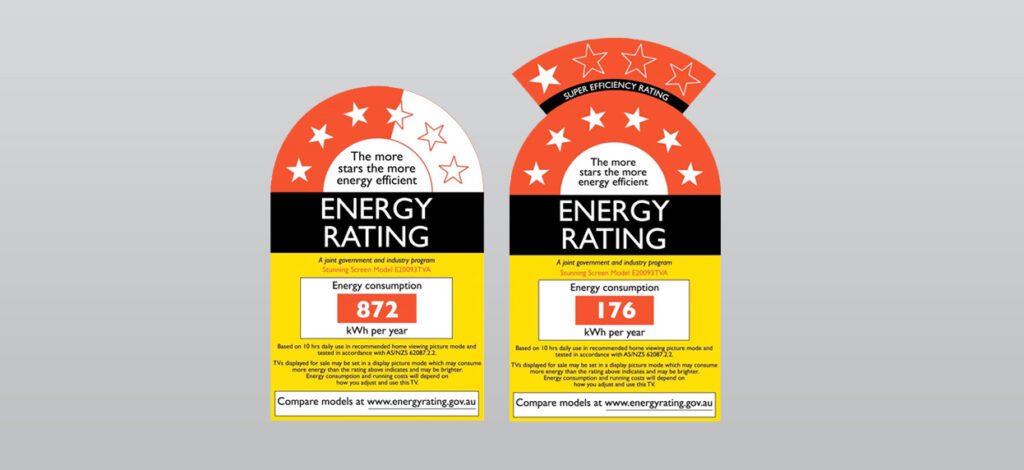Last post we provided a review on the Energy Rating app which can help the consumer to work out the estimated power cost for a given appliance before they make a purchase. As mentioned in the article the app is based on the Energy Rating labels that are featured on equipment and appliances.
We know that the higher the number of stars on the label means the appliance is more energy efficient. But what does this actually mean? Here is a more in depth explanation of the Energy Rating Label:
Appliances covered
It is mandatory for the energy rating label to be displayed in retail stores for the following:
- Air conditioners
- Clothes washers and dryers
- Dishwashers
- Televisions
- Refrigerators and Freezers
- Computer Monitors
Star Rating
The sticker shows from one to six or in the case of televisions one to ten stars. An appliance with more stars is more efficient. This means that it will use less electricity to achieve the same level of performance of similar models with the same size and capacity.
Energy Consumption
The figure at the bottom of the label shows an annual energy consumption figure in kilowatt hours (kWh) per year. This figure is useful to work out running costs. To work out estimated annual power costs the kWh number on the label needs to be multiplied by your electricity tariff (cents per kWh).
Your electricity tariff can be viewed on your power bill.
Alternatively, use the Energy Rating app to calculate this figure. Remember to change the settings to suit your location or plug in the figure from your power bill to be more accurate.
With any calculations like this, assumptions have been made. To calculate the energy consumption figure on the Energy Rating Label, the following usage assumptions have been used:
- Televisions and Computer Monitors = 10 hours use plus 14 hours in standby per day
- Fridges and Freezers = in use 24 hours per day
- Clothes Dryers = 1 full load per week
- Dishwashers = 7 uses per week at the ‘normal’ setting
- Clothes washers = 7 uses per week using a warm wash
Energy rating labels are a great visual comparable tool which allow consumers to make informed decisions. For more information visit http://www.energyrating.gov.au/
Source: http://www.energyrating.gov.au/




